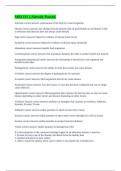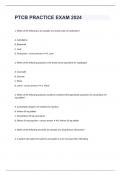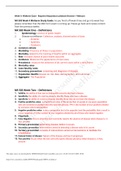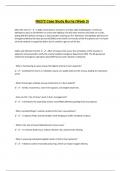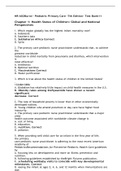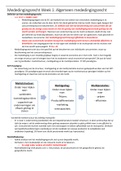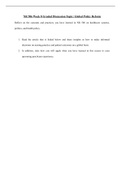Exam (elaborations)
MBI 111 || Already Passed.
- Course
- Institution
Infection correct answers colonization of the body by a microorganism Disease correct answers any change from the general state of good health; not all disease is due to infection and infection does not always cause disease Sign correct answers Objective evidence of disease (rash, fever) S...
[Show more]
